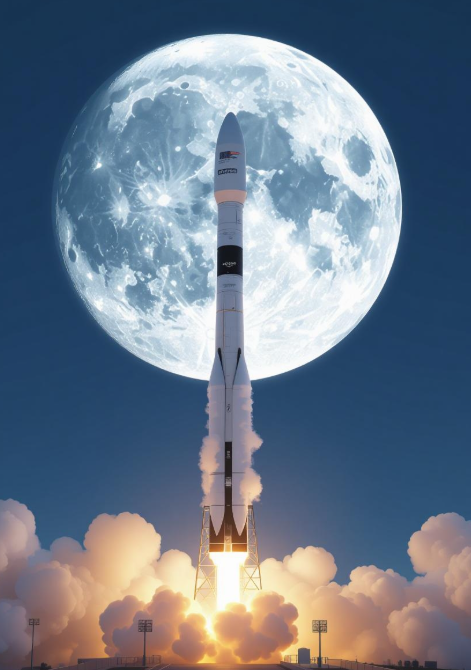The California coast lit up with rocket fire this past Sunday evening as SpaceX once again demonstrated why they’re the undisputed leaders in commercial spaceflight. At exactly 10:04 PM Eastern Time on September 28, 2025, a battle-tested Falcon 9 rocket roared to life from Vandenberg Space Force Base, carrying 28 brand-new Starlink satellites into the star-filled night sky.
But this wasn’t just any ordinary launch. This was the 28th flight for Booster B1063, a rocket that has become something of a legend in the spaceflight community. Think about that for a moment – the same rocket has now successfully completed 28 round trips to space and back. That’s like your car making 28 cross-country trips without needing a major overhaul.
A Perfect Evening for Rocket Science

The weather gods were clearly smiling on SpaceX Sunday night. With crystal clear skies, just 3% cloud cover, and gentle 8 mph winds, conditions couldn’t have been better for the Starlink Group 11-20 mission. The temperature held steady at a comfortable 68°F, making it an ideal evening for the thousands of spectators who gathered along the California coast to witness the spectacle.
Local time for the launch was 7:04 PM Pacific, right during that magic hour when the sun has just set but there’s still enough light in the western sky to create a dramatic backdrop. Anyone who’s seen a Falcon 9 launch from Vandenberg knows the visual treat they’re in for – the rocket’s exhaust plume creates an otherworldly light show against the darkening California sky.
The Star of the Show: Booster B1063
Let’s talk about the real hero of this mission – Booster B1063. This particular first stage has quite the resume. Since its maiden flight, it has supported some of SpaceX’s most important missions, including NASA’s Double Asteroid Redirection Test (DART), which famously crashed into an asteroid to test planetary defense capabilities. It also launched the Sentinel-6 Michael Freilich ocean-monitoring satellite and numerous Transporter rideshare missions.
The fact that this booster has now completed 28 flights is nothing short of remarkable. When SpaceX first started talking about reusable rockets back in the early 2010s, many industry experts were skeptical. “Rockets aren’t airplanes,” they said. “You can’t just refuel them and fly them again.” Well, B1063 has just proven them wrong for the 28th time.
Each successful landing and relaunch of this booster represents millions of dollars in cost savings. Traditional rockets are essentially very expensive fireworks – they burn up after one use. But B1063 has now generated value equivalent to what would have required 28 separate rockets in the old way of doing business.
The Pacific Ocean Touchdown
About eight and a half minutes after liftoff, B1063 executed what has become SpaceX’s signature move – a precision landing on the autonomous drone ship “Of Course I Still Love You.” The ship was positioned in the Pacific Ocean, waiting patiently for its mechanical visitor.
These drone ship landings never get old. Picture this: a 15-story tall rocket booster, having just traveled to the edge of space at thousands of miles per hour, slows itself down using its own engines and gently touches down on a moving platform in the middle of the ocean. The fact that SpaceX makes this look routine is a testament to how far rocket technology has advanced.
The successful landing marked the 154th booster recovery for SpaceX overall – a number that would have sounded like science fiction just a decade ago. Each landing represents another step toward making space travel as routine as commercial aviation.
The Starlink Mission Continues

The 28 Starlink satellites deployed during this mission will join thousands of their siblings already in orbit, all working together to provide high-speed internet access to remote and underserved areas around the world. These aren’t your grandfather’s communication satellites – these are sophisticated, flat-panel designed spacecraft that can adjust their orbits, communicate with each other, and even automatically deorbit themselves at the end of their useful lives to reduce space debris.
The Starlink constellation is now SpaceX’s cash cow, generating billions in revenue that helps fund the company’s more ambitious projects like Starship and eventual missions to Mars. It’s a brilliant business model: use proven Falcon 9 technology to deploy a profitable satellite internet service, then use those profits to develop even more advanced space technologies.
Why Vandenberg Matters
Vandenberg Space Force Base isn’t just another launch site – it’s strategically located to send satellites into polar and sun-synchronous orbits. When SpaceX launches from Florida’s Kennedy Space Center, the rockets typically head east to take advantage of Earth’s rotation. But when they need to place satellites in different orbital patterns, Vandenberg’s location on the California coast allows rockets to head south over the Pacific Ocean.
This particular launch site has a rich history, having witnessed 833 rocket launches over the decades. It’s seen everything from early Cold War missile tests to modern commercial satellite deployments. Space Launch Complex 4 East, where this Falcon 9 lifted off, has become SpaceX’s West Coast headquarters for operations.
The Numbers Game
Let’s break down some impressive statistics from this launch:
The mission reached space in just under nine minutes, with the first stage separating from the upper stage about 2.5 minutes into flight. The nine Merlin engines on B1063 provided over 1.7 million pounds of thrust at liftoff – enough power to lift a fully loaded 747 jumbo jet.
The satellites were deployed about an hour after launch, once the upper stage had coasted to the proper altitude and orbital position. Each Starlink satellite weighs roughly 570 pounds and is designed to operate for at least five years in orbit.
Insights
This successful mission represents more than just another notch in SpaceX’s belt. It demonstrates the maturity of rocket reusability technology and proves that space access is becoming increasingly routine and affordable. B1063’s 28th flight puts it in elite company among SpaceX’s booster fleet, though it’s not quite the record holder – that distinction belongs to B1067, which has completed 30 flights.
The rapid turnaround and high flight rate of SpaceX’s Falcon 9 fleet continues to reshape the entire space industry. Traditional aerospace companies that once dominated the launch market are scrambling to develop their own reusable rocket technologies to remain competitive.
The Human Element
Behind every successful SpaceX launch is a team of thousands of engineers, technicians, and support staff who make it all possible. From the propulsion experts who ensure the Merlin engines fire perfectly, to the recovery crews who prepare the drone ships, to the mission controllers who monitor every aspect of the flight – it’s human expertise that makes these technological marvels possible.
The fact that this launch went off without a hitch on a Sunday evening is a testament to the dedication of these teams. Space doesn’t take weekends off, and neither do the people who make space exploration possible.
Next Move?
With this successful mission in the books, SpaceX shows no signs of slowing down. The company is on track for another record-breaking year in terms of launch frequency, and the Starlink constellation continues to grow larger and more capable.
Meanwhile, lessons learned from missions like Starlink Group 11-20 continue to inform SpaceX’s development of Starship, their next-generation super heavy-lift vehicle designed for missions to the Moon, Mars, and beyond. Every Falcon 9 flight provides valuable data about rocket operations, reusability, and the challenges of routine space access.
Innovation Next?
Sunday’s launch represents more than just 28 satellites joining an internet constellation. It’s part of a fundamental shift in how humanity approaches space. We’re moving from an era where space was the exclusive domain of government agencies and a few major corporations to one where space access is becoming democratized and commercialized.
The success of missions like this one paves the way for all sorts of possibilities – from space-based manufacturing to asteroid mining to permanent human settlements on other worlds. When rocket launches become as routine as airline flights, the entire solar system becomes humanity’s backyard.
As B1063 sits aboard the drone ship “Of Course I Still Love You,” being transported back to port for its next mission, it carries with it the promise of an exciting future in space. This veteran booster isn’t done yet – it will likely fly many more times, continuing to push the boundaries of what’s possible in rocket reusability.
The California coast may have enjoyed a spectacular light show on Sunday evening, but the real fireworks are just beginning as humanity’s space age truly takes off.



